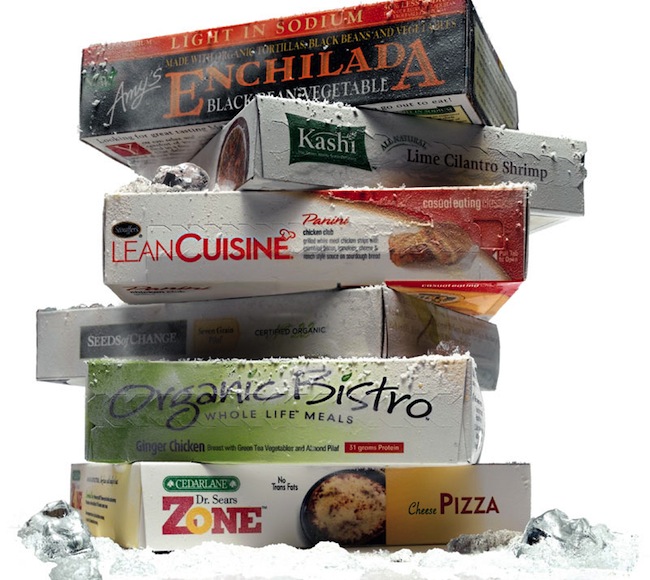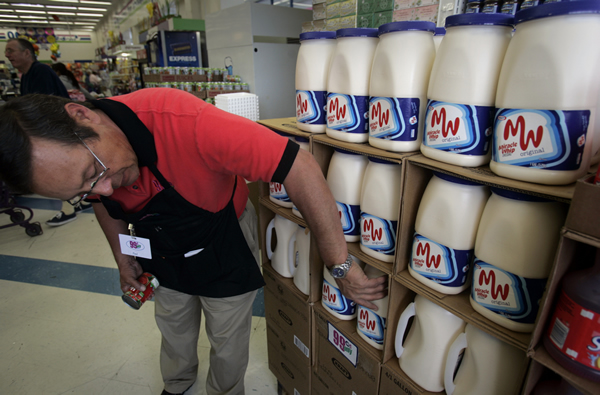
Earlier we talked about “overrated health foods” that are not everything they claim to be. Foods like egg whites and acai berry, which while healthful are not as amazing as you might think.
Today we’re going to look at some foods that are far worse… ones that I would call fake health foods. These are foods that the companies actually know are unhealthy but place in the aisles to cash in off misinformed customers.
There are even more insidious because of the manipulative corporate intentions, so you can keep an eye out for these and help your well-meaning friends avoid them.
#1 Better ‘n Peanut Butter
This one is aggravating not only for being less healthy, but because it has the sheer audacity to claim it’s healthier than the real deal.
I can respect JIF and Skippy at least a little bit because they don’t pretend to be superior while adding sugar to an otherwise pretty-good peanut butter.
“Better’n Peanut Butter” however, takes away good parts of peanut butter and adds in things you don’t want.
For example, an average double-tablespoon of natural peanut butter will have 8g carbs, 8g protein, and 16g fat.
The fat content may sound high, but remember that the fat is 80% unsaturated (same as olive oil) and just fine in moderation.
How does “Better ‘n Peanut Butter” improve this natural wonder?
By taking the fat AND protein out and bumping up the refined carbs.
So you’re left with 2g fat, 2g protein, and 13g carbs.
Oh and if you were wondering, the extra carbs come from dehydrated cane juice, rice syrup, and tapioca syrup… all fancy names for sugar. They claim it’s not “refined” sugar but I say if you have to chemically suck the sugar out of another food to make something sweet, it’s pretty processed.
What’s more, without the fat and protein to fill you up, you’re likely to eat way more of the supposed “Better” kind, resulting in a larger amount of calories than you were planning on.
#2 Frozen Diet Meals

In the frozen section of the grocery store, you generally have two types of microwaveable meals to choose from.
There’s the “Yes I’m lazy” category and the “I’m a sucker for pretend-healthy food” category.
You can just tell from the brand names which one is for you. In the first category, you’d find Hungry Man and Banquet Select. You don’t look at an item named “Hungry Man XXL” with a picture of WWE wrestlers on the cover and expect a sprout salad.
But then you have Healthy Choice, Lean Cuisine, and Eating Right. What do most of these have in common?
Well they all make the promise that you will be eating healthfully merely by picking up a package with “lean” or “healthy” on it.
And what kind of person do you think will rush right to labels like that?
People who are unable or unwilling to do their own research on what types of foods are healthy. They’d prefer to let the companies decide for them.
So they end up eating these lower-calorie but heavily processed microwavable meals, many being loaded with refined white grains, additives, and sugars.
Now not everything pre-made in the frozen aisle is bad for you. You just have to treat a frozen dinner like that like any other packaged food and ask yourself:
- Does this have an adequate amount of protein?
- Does this have the carb amount I’m looking for?
- Are there a lot of sugars, additives, and other things I don’t want in my body?
You’ll find that once you start analyzing what’s inside frozen dinners, you will lose your desire to have them at all and… god forbid… start cooking for yourself instead.
#3 Miracle Whip & Fat-Free Dressings
You may know Miracle Whip as the “Healthier Mayo” in the grocery store. Interestingly enough, Miracle Whip originally began as the “Cheaper Mayo” in the 1930’s when ingredients like eggs were harder to come by.
At some point in time, Kraft realized that they could raise the price of Miracle Whip to the same amount as Mayo while capitalizing on the “all fats are evil” scare. So Miracle Whip became something for more health conscious people.

Now we can break open the myth of this thinking.
What’s the main difference between the two? Mayonnaise has egg in the ingredients and Miracle Whip has high fructose corn syrup instead.
So calorie count and fat content aside, the real question is if you think eggs are healthier than cheap refined sugar. If so, then mayo should be your choice.
The same is with Fat-Free dressings. Kraft is another big offender at this, by creating dressings without olive oil (which is very healthy) and instead putting in high-fructose corn syrup to pad your waistline
There are other odd products to watch out for, such as orange juice that has been de-sugared and replaced with some artificial sweetener. You are better off not drinking fruit juice in the first place, but chemically altering the food is not the answer.
The truth is that nature has given us food that is great “as is” without needing tampering to be healthier. Man’s adjustments just get in the way.
Fake Health Foods Checklist
Your best bet when looking at foods that claim to be healthy are to ask these questions:
- Is this a natural food that a company is chemically altering?
- Is natural fat being substituted with sugar of any kind (including any “syrup” that sounds natural)?
- Is this product’s only health claim that it’s low calorie or low fat?
You’ll see a number of products like these in health food stores, possibly even organic grocery markets as well. The reality you’ll have to accept is that you cannot trust any company to have your best interests in mind over their profit statement.
This means you have to take responsibility for everything you eat. Sometimes there will be a company you can trust on a limited basis. If Horizon makes an organic cottage cheese you like, you can probably trust their organic yogurt too. However, it’s always up to you to look at the label and find out what these health claims really mean.
-Terry Asher
Terry
Latest posts by Terry (see all)
- How Important Are Net Carbs For Building Huge Muscle? - Apr 28, 2017
- The Matt Damon Workout Explained - Apr 27, 2017
- Watercress – Benefits And The Best Way To Consume It - Apr 26, 2017









